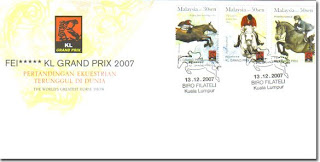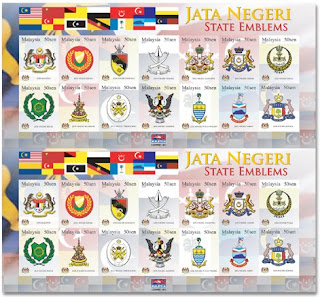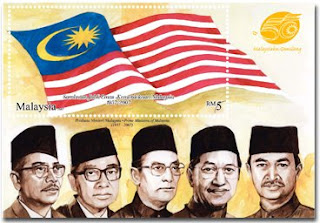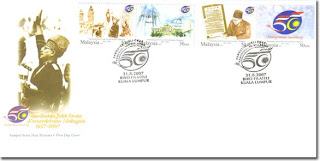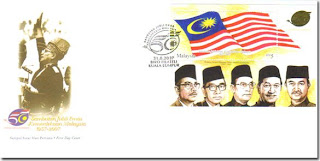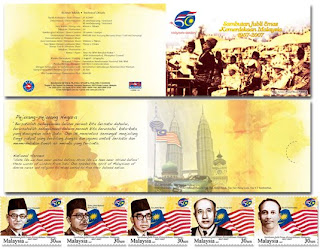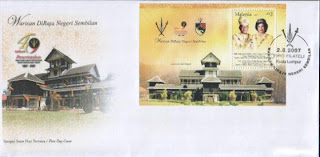 Garden Flowers
Garden FlowersMalaysia is a paradise of fascinating sights and attractions, well-known for its rich and enormous variety of flora which range from many thousands of species from all over Peninsular Malaysia and the states of Sabah and Sarawak. It is estimated that over 15,000 flowering plant species are found in Malaysia. The flowering plants include some 2,000 type of trees, including 200 different palms and 3,000 species of orchids. In addition to that, the world's largest flower, 'the giant rafflesia' (also known as a corpse lily), as well as the largest pitcher plant, 'the Nepenthes rajah', which can hold up to 2 liters of water, also grow here. The plants come in a tremendous diversity in plant species varying in color, shape, texture and density of leaves.
Sacred Lotus (Nelumbium nelumbo)
Sacred Lotus is an aquatic perennial, originally from Indonesian and India. The Sacred Lotus (Nelumbium nelumbo) has great significance in Eastern religion. This flower is especially sacred to Buddhist to whom it represents the perpetual cycles or reincarnation. It grows up to a height of 19 feet depending on the depth of a swamp or creek it grows in. The roots of the sacred lotus are firmly planted in the mud beneath the water surface. It has a long stem to which the leaves and flowers are attached. The big circular leaves float on the surface and the flowers grow above it. The pink or white sacred lotus blooms early in the morning and the petals will wilt the later hours of daylight. The fruit is a conical shaped pod with the seeds arranged in the holes. When the seeds are ripe, they are released when the pod bends down towards the water. The flowers, seeds, young leaves and rhizomes are edible, while the big mature leaves, 2 feet in diameter, are used to wrap steamed food.
Hydrangea macrophylla
Hydrangea macrophylla is native to Japan and Korea. This shrub can be naturalized in compatible climates. It is a deciduous shrub, growing 1-3 meters tall. The leaves grow opposite each other, in simple ovoid-acute size, 7-20 cm long, with a coarsely toothed margin. Its flowers are pink, white, or blue, depending on soul pH. In acidic soil, the flowers will be blue, whereas in alkaline soil, the flowers will be pink. In neutral soil flowers will be purple. Hydrangea macrophylla has been cultivated for many years as an ornamental plant in Japan, and in the last 150 years, it is also extensively bred in other areas of the world with a temperate climate.
In warm climates, Hydrangea macrophhylla is good for adding a splash of spring time color to shady areas and woodland gardens. Minimal pruning is recommended for most prolific flowering. Flowers are easily air dried and are long lasting.
Hippeastrum reticulatum
Hippeastrum reticulatum is a bulb-bearing herb from southern Brazil. This plant has a fleshy and straight stalk with three or more flowers. Grown from bulbs, the flowers are trumpet shaped, and pink in color with white veins. The flower naturally reaches a diameter of about 3 inches. Typical broad strap-shaped leaves are dark green with clear white stripe down the center. The gorgeous flowers are pink with darker reticulations. It does not have a dormant period. This selection is a slow grower and is not as large as other clones. This flower is normally grown to be used in flower arrangements and as potted plants.
Bougainvillea
This woody climbers were introduced from South America. The long vine are thorny and the alternate ovate elliptical leaves are hairy. The small flowers are surrounded by large papery bracts. An evergreen shrubbery vine, Bougainvillea is popular for its long-lasting, colorful flower bracts which appear periodically throughout the year. Most common colors of the bracts are magenta, purple, white, orange and crimson, though 'rainbow' bougainvilleas with flowers of two colors on the same plant are common today. Bougainvillea can grow on its own as a sprawling shrub, or allowed to grow naturally where it will quickly cover fences or climb onto trees.
Ipomoea indica
Ipomoea indica is a tender perennial with heart-shaped leaves and with flowers produced daily from a dense clustered inflorescence. It grows up to 7 cm long, tubular and arranged in clusters of 3 to 12 flowers. Ipomoea indica is a native of Hawaii and the New World tropics, but it has become an invasive species in Australia. It is also present in Asia, although they grow in subtropical and temperate regions.
Morning glory is a common name for a number of species of flowering plants in the family of Vonvolvulaceae. The Morning Glory flowers often show marks where the corolla was neatly folded or rolled up in the bud. The flowers will start to fade 2 hours before the petals start to curl in. Morning glory is one of the best flowers to decorate fences and walls. Today, Ipomoea indica is found throughout the tropics, scrambling over fences and over woody plants, often to their detriment. However, it is delight when in bloom.
Hibiscus rosa-sinensis
Hibiscus rosa-sinensis is the state flower of Hawaii, and also the national flower of Malaysia. Also known as the Chinese hibiscus, it is probably the most popular and widely planted shrub of the tropics. It is believed to be native to China and came to the world bay via South Pacific and Hawaii. This plant creates a bold effect with its medium textured, glossy and dark green leaves and vibrantly colored, four to eight-inch-wide, showy flowers, produced throughout the year. Cultivars are available with the combination of single or double flowers in shades of white, pink. red, yellow, peach, or orange, or combination of all these. Hibiscus flowers are basically characterized as single or double forms of variations in the number and arrangement of petals.
Flowers are produced continuously in great abundance, making up for the fact that each flower will last only for one or two days with the blossoms opening early in the morning and wilting by late afternoon. Most hibiscuses are odorless, but some of the basic varieties have a light scent. The Hibiscus, Malaysia's nation flower is the pride of the country which signifies the country's strength, unity and independence.




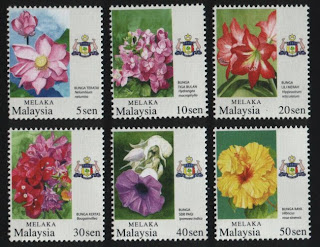





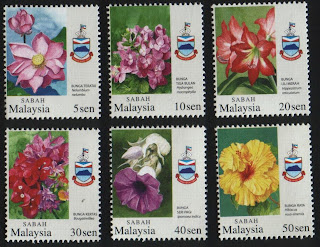



 Technical Details
Technical Details Date of Issue : 31-Dec-2007
Denomination : 5 Sen; 10 Sen; 20 Sen; 30 Sen, 40 Sen, 50 Sen (for all 14 States)
Sheet Content : 20 Stamps
Stamp Size : 27mm x 32mm
Paper : SPM Watermarked, Phosphor Coated
Printing Process : Lithigraphy
Printer : Percetakan Keselamatan Nasional Sdn Bhd
Stamp Designer : Prof. Dato' Raja Zahabuddin Raja Yaacob
First Day Cover Value : 30 Sen
Folder Value : RM 5.00
 The FEI 5 Star KL Grand Prix 2007
The FEI 5 Star KL Grand Prix 2007